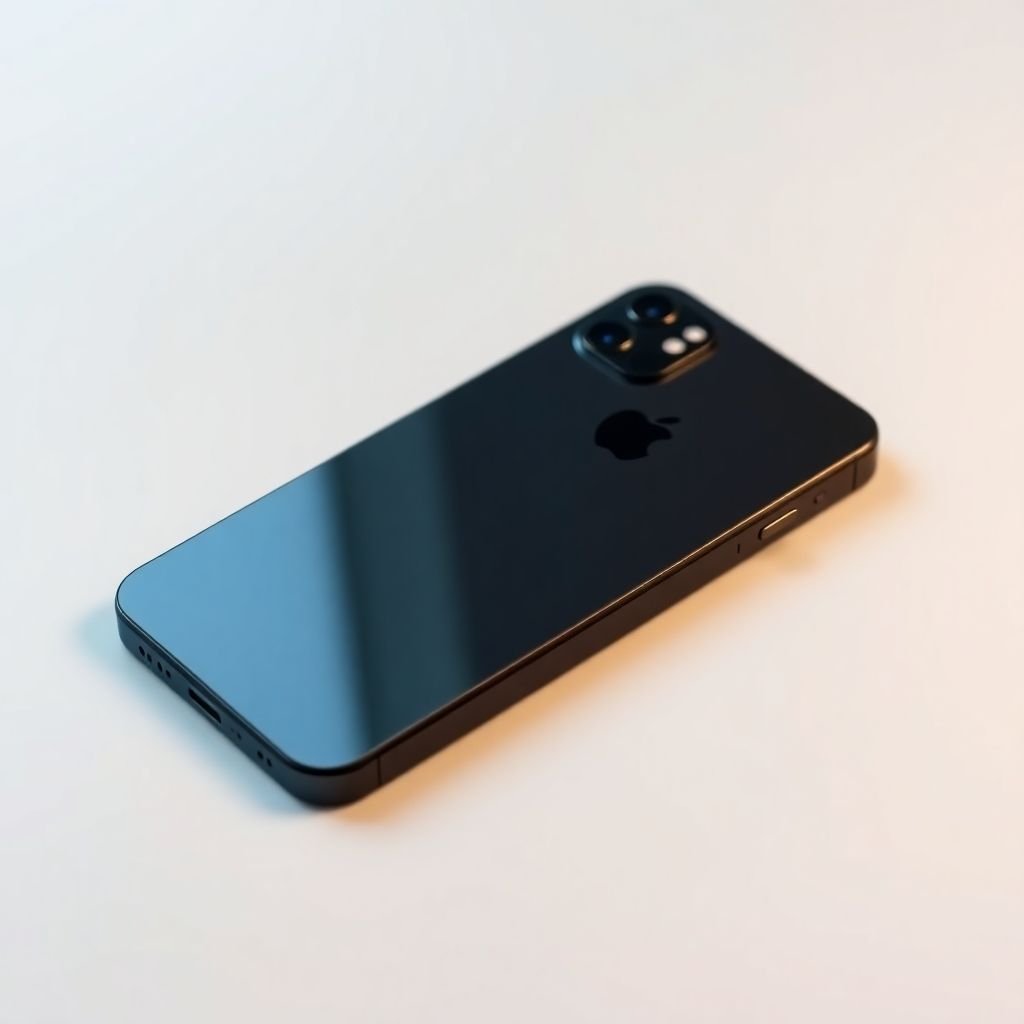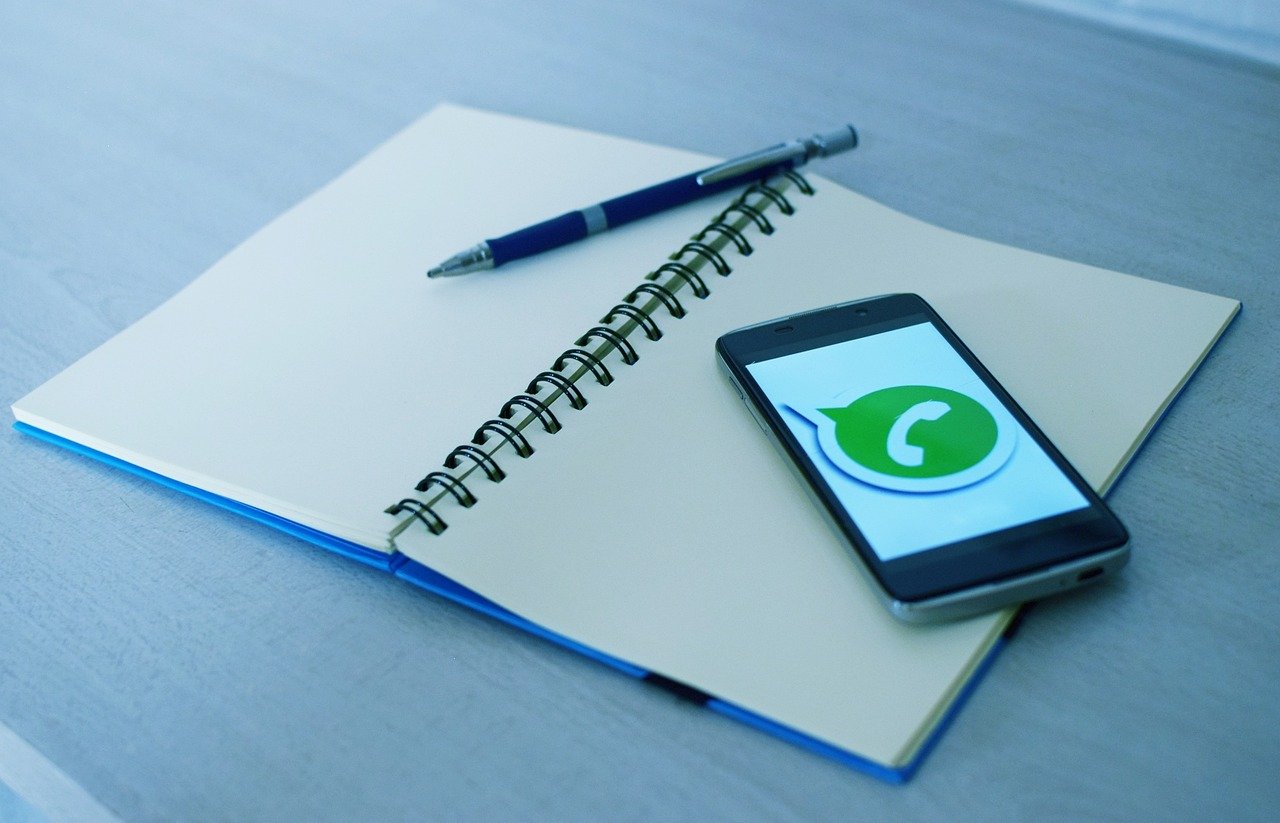The idea of an iPhone without a charging port could soon be more than just a dream. Apple has been exploring this bold concept for a while now, hinting at a future where wireless technology takes centre stage. As we look ahead, it’s worth considering what this shift might mean for all of us who rely on our iPhones daily. Let’s break down the implications of a port-free iPhone and how it could change our experience with these devices.
Key Takeaways
- Apple is pushing towards a fully wireless iPhone, possibly eliminating the charging port altogether.
- Users may enjoy the convenience of wireless charging but could face challenges with compatibility and charging locations.
- Regulatory pressures, particularly from the EU, are influencing Apple’s design decisions regarding ports.
- Technological advancements in wireless charging and battery efficiency will be crucial for a port-free future.
- Consumer reactions will vary, with some embracing the change while others may struggle to adapt.
The Vision Behind A Port-Free iPhone
Apple’s Ambitious Plans
Apple has always been one to push boundaries, and the idea of a port-free iPhone is no different. The original plan, according to some, was to launch the iPhone 17 Air as a completely port-free device. This meant ditching the charging port and any other physical connectors. The goal? A sleek, minimalist design and a step further into the wireless future. It’s a bold move, and it shows Apple’s commitment to innovation, even if they did hesitate at the last minute. What’s interesting is the ‘why’ behind this ambition. It’s not just about aesthetics; it’s about durability and pushing the limits of what a smartphone can be. The portless iPhone concept is more than just a design choice; it’s a statement.
The Shift Towards Wireless Technology
The move towards a port-free iPhone is part of a larger trend: the shift towards wireless technology. We’re already seeing it with wireless charging, Bluetooth headphones, and cloud storage. Removing the port is the next logical step. Think about it: fewer cables, less wear and tear on the device, and a cleaner overall experience.
Here are some reasons for the shift:
- Convenience: Wireless is simply easier.
- Durability: Fewer ports mean fewer points of failure.
- Innovation: It pushes the industry forward.
The transition to wireless isn’t just about convenience; it’s about creating a more robust and streamlined user experience. It’s about embracing the future of technology and leaving behind the limitations of physical connections.
Patents and Prototypes
Apple has been exploring port-free designs for years, and their patents and prototypes are a testament to this. They’ve been filing patents for wireless charging solutions, magnetic connectors, and other technologies that could make a port-free iPhone a reality. It’s clear that they’re serious about this, and they’re investing heavily in the research and development needed to make it happen. It’s not just a pipe dream; it’s a carefully planned strategy. These patents offer a glimpse into Apple’s long-term vision and their commitment to pushing the boundaries of what’s possible. It’s only a matter of time before we see a truly port-free iPhone, and these patents are paving the way.
User Experience Transformation

Impact on Daily Usage
Okay, so imagine your iPhone without that little port at the bottom. Sounds sleek, right? But what does it actually mean for how you use your phone every day? Well, for starters, you can kiss goodbye to plugging in your trusty old headphones. Everything’s going wireless, all the time. That means Bluetooth headphones are about to become even more essential. And what about transferring files? Airdrop will become your best mate, or you’ll be relying on cloud storage a whole lot more. It’s a big shift, and it’ll definitely change how we interact with our devices. The iPhone 17 Air is expected to be port-free.
Potential Benefits of Wireless Charging
Wireless charging, when it works well, is pretty neat. No more fiddling with cables in the dark, just plonk your phone down on a pad and let it juice up. A port-free design could also mean better water resistance, which is always a plus. Plus, a cleaner design is always welcome. Here’s a quick rundown of potential upsides:
- Less wear and tear on charging ports (because there isn’t one!)
- Potentially faster charging speeds with improved wireless tech.
- A more streamlined and modern aesthetic.
Wireless charging could also open the door to new accessories and charging solutions. Think charging stands that double as desk organisers, or portable power banks that wirelessly top up your phone on the go.
Challenges in Transitioning
Let’s be real, though, it’s not all sunshine and roses. Wireless charging isn’t as efficient as plugging in, so it takes longer. And you can’t really use your phone while it’s charging unless you’re okay with it constantly disconnecting. Plus, there’s the whole issue of compatibility. Will your old wireless chargers still work? Will you need to buy new ones? And what about public charging stations? Are they all going to be wireless? There are definitely some hurdles to overcome. Here are some potential issues:
- Reliance on wireless solutions, which can occasionally fail or lose connection, might reduce user confidence and satisfaction.
- Consumers would need new chargers, wireless earbuds, and possibly wireless data solutions, incurring additional expenses.
- Some users might enthusiastically embrace the wireless transition, but many would face a steep learning curve.
Regulatory Considerations and Compliance

EU Regulations on Charging Ports
The EU has been pushing for standardisation of charging ports for years, primarily to reduce e-waste and make life easier for consumers. The big one is the push for USB-C as the common charging port for a wide range of devices. This regulation directly impacts Apple, who have historically used their Lightning port on iPhones. The rule aims to ensure interoperability and reduce the need for multiple chargers. However, the regulations have a loophole: if a device only charges wirelessly, there’s no requirement to use USB-C. This could be the path Apple is considering.
Apple’s Response to Regulatory Pressure
Apple hasn’t been thrilled about the EU’s charging port regulations, to put it mildly. They initially argued that forcing USB-C would stifle innovation and create more e-waste, as millions of Lightning cables would become obsolete. However, they’ve since started incorporating USB-C into some devices, like iPads and the iPhone 15 Pro. A completely portless iPhone could be seen as a way to sidestep the regulations altogether, while still offering a charging solution – albeit a wireless one. It’s a bit of a gamble, as it could annoy some users, but it also allows Apple to control the charging ecosystem.
Future Implications for Design
If Apple goes fully portless, it could set a new trend in the industry. Other manufacturers might follow suit, leading to a wider adoption of wireless charging. This could also push for advancements in wireless charging technology, making it faster and more efficient. However, it also raises questions about data transfer, as the charging port is often used for that too. A portless design might necessitate a greater reliance on cloud storage and wireless data transfer methods. Here are some potential implications:
- Increased focus on wireless charging innovation.
- Potential for new data transfer technologies.
- A shift in accessory design.
The move to remove charging ports could be a strategic one, allowing Apple to dictate the future of charging and data transfer. It’s a bold move, but one that could pay off in the long run, especially if wireless technology continues to improve.
Technological Innovations Required

Advancements in Wireless Charging
Going port-free isn’t just about removing a hole; it’s about making wireless charging genuinely better. We’re talking faster speeds, greater efficiency, and more reliable connections. Current wireless charging tech can be a bit hit-or-miss, and nobody wants to wait longer for their phone to charge than they would with a cable. The key is to push the boundaries of what’s currently possible with inductive charging, maybe even exploring new methods altogether. Think about it:
- Improved energy transfer rates.
- Reduced heat generation during charging.
- Greater compatibility across different charging pads.
Magnetic Charging Solutions
MagSafe was a step in the right direction, but there’s still room for improvement. Stronger magnets, more versatile attachments, and faster charging speeds are all on the table. Imagine a future where your phone snaps effortlessly onto any charging surface, instantly aligning for optimal power transfer. It’s not just about convenience; it’s about creating a seamless and intuitive charging experience. The iPhone 17 Air could really benefit from this.
Battery Life and Efficiency
Let’s be honest, battery life is always a concern. If we’re ditching the port, we need batteries that can keep up with our demands. That means squeezing more power into smaller spaces and optimising software to minimise energy consumption. Efficiency is the name of the game. No one wants a phone that dies halfway through the day, especially when relying solely on wireless charging.
A port-free future hinges on significant breakthroughs in battery technology. We need batteries that not only last longer but also charge faster wirelessly. This requires a holistic approach, combining hardware and software innovations to maximise energy efficiency and minimise power drain.
Market Reactions and Consumer Sentiment
Initial Reactions to Port-Free Devices
Okay, so when the rumours first started swirling about a port-free iPhone, the internet, predictably, went into meltdown. Some people were all for it, seeing it as a bold step into the future of wireless technology. Others? Not so much. There were concerns about convenience, charging speeds, and whether all those existing Lightning cables would suddenly become obsolete. It’s fair to say the initial reaction was pretty mixed, with a healthy dose of scepticism thrown in for good measure. I remember thinking, “Another dongle? Really?” But then again, I also thought, “Maybe this could actually be cool?”
Comparisons with Competitors
It’s hard not to compare Apple’s potential move with what other companies are doing. Some Android manufacturers have already experimented with removing ports, but it hasn’t exactly become a widespread trend. The key difference is, of course, Apple’s ecosystem. They have a knack for getting people to adopt new technologies, even if there’s initial resistance. Whether that’ll be the case here remains to be seen. But you can bet your bottom dollar that everyone will be watching closely. The Trump administration announced that electronics will be exempt from reciprocal tariffs, a decision aimed at stabilising prices for consumers.
Long-Term Consumer Adaptation
Long term, I reckon consumer adaptation will depend on a few things. Firstly, how good the wireless charging tech actually is. If it’s slow and unreliable, people will riot. Secondly, how well Apple manages the transition. If they make it easy for people to switch over, with decent trade-in programmes and clear instructions, it’ll be a lot smoother. And thirdly, whether the benefits of a port-free design – like improved water resistance and a sleeker look – outweigh the inconveniences. It’s a gamble, for sure, but Apple’s never been afraid of a bit of risk.
Ultimately, the success of a port-free iPhone will hinge on whether Apple can convince consumers that it’s a genuine improvement, not just a gimmick. It’s about making the user experience better, not just different.
Here’s a quick look at potential adoption factors:
- Wireless charging speed and reliability
- Ease of transition for existing users
- Perceived benefits vs. inconveniences
- Pricing of wireless charging accessories
Apple’s Strategic Direction

The Future of iPhone Design
Apple has always been one to push boundaries, and the idea of a port-free iPhone is no exception. While the iPhone 17 Air didn’t quite make it as a completely port-free device, the ambition is still there. It seems Apple is carefully considering how to balance innovation with what users actually need (or think they need!).
Balancing Innovation with User Needs
It’s a tricky balancing act. On one hand, Apple wants to be seen as a leader in tech, always pushing the envelope. On the other, they need to make sure that any changes they make don’t alienate their customer base. Removing the charging port is a big change, and it’s one that could easily backfire if not handled correctly.
Long-Term Wireless Strategy
Apple’s not giving up on the idea of a wireless future. They’re still investing heavily in wireless charging tech, and they’re working on making wireless connectivity faster and more reliable. It’s all part of a long-term plan to make port-free devices a reality. It’s not just about getting rid of the port; it’s about creating a better, more seamless user experience.
Apple’s hesitation to fully commit to a port-free design right now suggests a thoughtful approach. They’re not abandoning the idea, but rather taking the time to ensure the technology and user experience are ready. This measured approach could ultimately lead to a more successful transition in the long run.
Here are some areas Apple is likely focusing on:
- Improving wireless charging speeds
- Enhancing the reliability of wireless connections
- Developing new ways to transfer data wirelessly
Potential Alternatives to Traditional Charging
MagSafe and Other Wireless Solutions
With the potential move away from traditional charging ports, it’s worth looking at what other options are out there. MagSafe, which Apple has already implemented, offers a glimpse into a future where charging is less about plugging in and more about simply attaching. It’s convenient, but it’s not without its limitations. Other wireless solutions are also in development, but they face similar hurdles in terms of speed and efficiency. The Satechi 2-in-1 Headphone Stand with Wireless Charger is a good example of how wireless charging can be integrated into other devices.
The Role of Inductive Charging Pads
Inductive charging pads have been around for a while, and they’re a pretty common sight now. You can find them in coffee shops, airports, and even built into furniture. They work by transferring energy wirelessly through electromagnetic induction. However, they’re not always the most efficient, and you have to make sure your device is properly aligned on the pad for it to work. Plus, you can’t really use your phone while it’s charging, which can be a pain. It’s also worth noting that not every place has inductive wireless charging pads available.
Exploring Magnetic Connectors
One interesting alternative is magnetic connectors. These are similar to the old MagSafe connectors that Apple used on MacBooks. They offer a secure connection and are easy to attach and detach. They could also free up space inside the phone for other components, like a bigger battery or better speakers. The challenge is making them strong enough so they don’t come undone easily, especially if you’re using a battery pack in your bag. Apple has experience with this technology, so it’s definitely a viable option.
The biggest challenge with going fully port-free is wireless charging inefficiency. It’s slower and less reliable than wired charging. Removing ports would make fast charging less accessible. Users would have to rely entirely on wireless solutions like MagSafe, eliminating wired options altogether. Data transfer would rely on AirDrop, Wi-Fi, or cloud-based services. This would require users to significantly adjust their daily smartphone habits.
Final Thoughts on a Port-Free iPhone
In the end, the idea of an iPhone without a charging port is both exciting and a bit daunting. Sure, it promises a sleeker design and a more wireless future, but it also raises questions about practicality. For now, Apple seems to be treading carefully, keeping at least one port to ease the transition for users. It’s clear they’re not abandoning the idea; they’re just waiting for the right moment. So, while we might not see a completely port-free iPhone just yet, it’s likely on the horizon. Until then, we’ll have to adapt to whatever changes come our way.
Frequently Asked Questions
What does a port-free iPhone mean?
A port-free iPhone would not have any physical charging ports. Instead, it would rely entirely on wireless charging methods.
How would I charge my iPhone without a charging port?
You would charge a port-free iPhone using wireless charging pads or magnetic connectors, similar to how some devices charge now.
What are the benefits of a port-free design?
A port-free design could make the iPhone more durable, lighter, and allow for a sleeker look without the need for ports.
Are there any drawbacks to a port-free iPhone?
Yes, some challenges might include needing to buy new charging accessories and the potential difficulty of charging in places without wireless options.
Will other phone brands follow Apple’s lead?
It’s possible that other brands may consider similar designs, especially if consumers respond positively to a port-free iPhone.
When can we expect a port-free iPhone to be available?
While there are no official dates, many believe it could happen in the next few years as technology advances.









